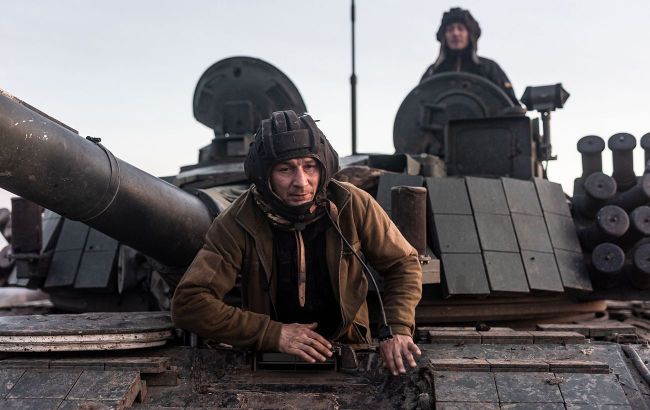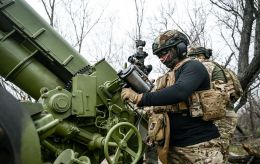ISW outlines key tasks for Ukrainian army to begin large-scale counteroffensive
 For a successful counteroffensive, the Ukrainian Armed Forces need to carry out a series of preparatory measures (photo: Getty Images
For a successful counteroffensive, the Ukrainian Armed Forces need to carry out a series of preparatory measures (photo: Getty Images
US officials have stated their support for new counter-offensive operations by the Armed Forces of Ukraine in 2025. To do this, Kyiv needs to seize the overall military initiative as quickly as possible, as Russia's dominance on the front in 2024 will give it several advantages, according to the report of the Institute for the Study of War (ISW).
Analysts of the department referred to material in the Financial Times, citing President Biden's national security advisor Jake Sullivan, who stated that in 2025, Ukraine plans to conduct a counter-offensive operation to regain the Ukrainian territory occupied by Russia. This will be possible after US military aid stops further advances of Russian forces in 2024.
A White House representative announced minor advances of Russian forces for an indefinite period and noted that US military aid will not instantly flip the switch of the situation on the battlefield in Ukraine. Sullivan also stated that American assistance will allow Ukrainian forces to hold the line and resist Russian attacks throughout 2024.
"ISW continues to assess that it will likely take several additional weeks for Western weapons and ammunition to arrive to frontline Ukrainian units and begin to have tangible battlefield impacts and that the arrival of US military aid to Ukraine will likely allow Ukrainian forces to stabilize the frontline and seize the initiative," the Institute for the Study of War report states.
Additionally, the department recalled an article in the Financial Times in January of this year, stating that US officials advocate for Ukraine to conduct a more conservative active defense in 2024 and prepare for a counter-offensive in 2025.
"ISW has previously argued at length that a Ukrainian active defense into 2025 would cede the theater-wide initiative to Russian forces for over a year, allowing the Russian command to shape preferable conditions by determining the timing, location, and intensity, of Russian attacks, and in by doing so control the resources that Ukrainian forces expend over this protracted period," the Institute noted.
The report notes that one of the Russian military bloggers positively reacted to the Financial Times publication of May 5 and indicated that Russians may simply conduct air strikes with gliding bombs on Ukrainian positions by the end of 2024 if the Ukrainian Armed Forces do not intend to start a counteroffensive, which would push back Russian forces this year.
ISW believes that the tactical significant advancement of Russian troops to the northwest of Avdiivka and the potential threat of a Russian offensive operation in the Kharkiv region is directly related to the ability of Russian forces to deliver indiscriminate strikes with gliding bombs along the front line, limited and weakened by Ukrainian defensive operations, as well as the control of the aggressor's forces over the initiative on the entire theatre of operations.
Analysts at the Institute for the Study of War noted that before the Armed Forces of Ukraine can compete for the initiative on the entire theater of military operations and conduct a counteroffensive later in 2024 or 2025, they will have to accomplish several tasks:
- receive and integrate American military assistance into advanced units;
- stabilize the front line;
- defend against predicted Russian summer offensives;
- prevent significant Russian operational advances;
- address current human resources issues.
"Ukraine’s ability to liberate its territory and conduct counteroffensive operations rests on a number of unmade decisions in the West, Russia, and Ukraine and any external efforts to impose a timeline on Ukrainian counteroffensive operations ignore the reality of the battlefield situation," the ISW report said.
Current frontline situation
According to ISW maps, the Ukrainian Defense Forces have expanded their positions in the Kherson region and restored positions in the village of Nevelske near Avdiivka. However, the Russian army has managed to advance somewhat near Kupiansk.
At the same time, the Russian army does not have a sufficient number of troops for an offensive and the capture of Kharkiv or Sumy.

